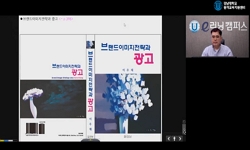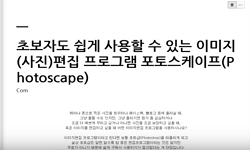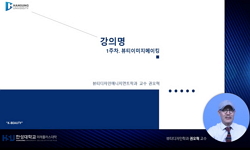본고에서는 기형도 시의 계절 이미지를 살펴보았다. 기형도가 남긴 시의 절반 이상의 작품에 계절 이미지가 드러나 있다. 원형적 이미지로서의 계절이 갖는 의미와 기형도가 감각한 계절은 ...
http://chineseinput.net/에서 pinyin(병음)방식으로 중국어를 변환할 수 있습니다.
변환된 중국어를 복사하여 사용하시면 됩니다.
- 中文 을 입력하시려면 zhongwen을 입력하시고 space를누르시면됩니다.
- 北京 을 입력하시려면 beijing을 입력하시고 space를 누르시면 됩니다.
https://www.riss.kr/link?id=T16092463
- 저자
-
발행사항
서울 : 고려대학교 대학원, 2022
-
학위논문사항
학위논문(석사) -- 고려대학교 대학원 , 문예창작학과 문학창작전공 , 2022. 2
-
발행연도
2022
-
작성언어
한국어
- 주제어
-
발행국(도시)
서울
-
형태사항
117 p ; 26 cm
-
일반주기명
지도교수: 이혜원
-
UCI식별코드
I804:11009-000000258146
- DOI식별코드
- 소장기관
-
0
상세조회 -
0
다운로드
부가정보
국문 초록 (Abstract)
본고에서는 기형도 시의 계절 이미지를 살펴보았다. 기형도가 남긴 시의 절반 이상의 작품에 계절 이미지가 드러나 있다. 원형적 이미지로서의 계절이 갖는 의미와 기형도가 감각한 계절은 차이가 있다. 이는 기형도가 계절 이미지를 개인적 상징으로 발전시켜 특유의 내면의식을 표현하는 도구로 사용했다는 것을 보여준다.
기형도 시의 계절 이미지는 세 가지로 유형화할 수 있다. 먼저 봄‧여름의 이미지는 자연의 폭력적인 성향이 두드러진다. 봄의 원형적 이미지는 생명과 탄생이지만, 기형도 시에서 봄의 이미지는 생명을 강제하는 물리적 폭력으로 묘사되었다. 여름의 이미지는 비 이미지와 바람 이미지로 나타난다. 특히 비 이미지는 화자의 능동성을 압수하여 행동을 저지한다. 이는 여름의 원형적 이미지인 성숙‧절정과 정반대의 것이며, 화자는 자연의 위용 앞에서 무력한 인간으로 남는다.
가을의 이미지는 생명에 대한 탐구에서 출발한다. 봄‧여름의 이미지는 생명력을 부정적으로 묘사했으나 가을의 이미지는 생명을 갖고 있는 존재들을 긍정적으로 인식한다. 화자는 생명력을 가진 대상을 탐구하며 그들을 향한 보호와 소생을 꿈꾸었다. 그러나 산재하는 죽음의 흔적을 목격하며 존재의 생명력을 죽음과의 연관 속에서 체험한다. 가을의 이미지는 죽음과 탄생이라는 생명의 양면성을 구체화한다.
겨울의 이미지는 주로 눈 이미지로 형상화된다. 눈 이미지는 이중적인 양상으로 표현되었다. 화자의 자아를 유폐시켜 유년으로의 회귀를 추동하나 아이러니하게도 화자를 다시 현실로 복귀시키는 것도 눈 이미지였다. 눈 이미지는 화자에게 적절한 고통과 그것을 이겨낼 수 있는 방안을 함께 제시해 자아의 성장을 유도한다.
이렇듯 기형도는 계절의 보편적 이미지를 시인의 체험과 결합시켜 계절 이미지를 개인적 상징으로 묘사했다. 결론적으로 기형도 시의 계절 이미지는 시인이 세계를 기존의 인식과 어떻게 구별하여 이해했는지를 보여주는 수단이었다. 계절 이미지의 분석은 기형도의 예리한 내면의식을 관찰할 수 있다는 점에서 의의가 있다.
핵심어: 기형도, 이미지, 계절 이미지, 사계절, 좌절의 형상화, 생명 탐구,
희망, 개인적 상징, 내면 의식, 원형적 이미지
다국어 초록 (Multilingual Abstract)
This study explored the seasonal images of Ki Hyeong-do's poetry. More than half of his poems have seasonal images, and the meanings of the seasons as archetypal images and the seasons that Ki Hyung-do senses are different. It shows that Ki Hyung-do d...
This study explored the seasonal images of Ki Hyeong-do's poetry. More than half of his poems have seasonal images, and the meanings of the seasons as archetypal images and the seasons that Ki Hyung-do senses are different. It shows that Ki Hyung-do develops the seasonal images as personal symbols and used them as tools to express his unique inner consciousness.
This study classified the seasonal images of Ki Hyung-do's poetry into three types. First, the images of spring and summer depict the violence of nature. Although the archetypal image of spring is life and birth, in his poetry, spring is portrayed as the physical violence that compels life. To him, summer appears as the images of rain and wind. In particular, the rain image inhibits the narrator's assertiveness and actions. This is the opposite of maturity and climax, the archetypal images of summer, and the narrator is left as a helpless human being in front of the majesty of nature.
The images of autumn start from the quest for life. Although the images of spring and summer include negative depictions of vitality, the images of autumn perceive living existence positively. The narrator explores living objects and dreams of protection and revival for them. Witnessing the scattered traces of death, however, the narrator experiences the vitality of existence in connection with death. The images of autumn embody the duality of life, death and birth.
Winter is mainly represented by the snow image. The snow image is expressed in a dualistic way; it imprisons the narrator's ego and driving a return to childhood, while ironically it returns the narrator to reality at the same time. This facilitates the growth of the self by presenting the narrator with appropriate pain and ways to overcome it.
As such, Ki Hyung-do transforms seasonal images into personal symbols by combining universal images of seasons with his experiences. In doing so, his seasonal images show how he understand the world by distinguishing it from the existing perception. The analysis of seasonal images is significant in that it allows us to observe his keen inner consciousness.
Key words: Ki Hyung-do, Images, Seasonal Images, Four
Seasons, Visualization of Frustration, Quest for Life,
Hope, Personal Symbols, Inner Consciousness,
Achetypal Images
목차 (Table of Contents)
- Ⅰ. 서론 1
- 1. 연구 목적 1
- 2. 연구사 검토 3
- 3. 연구 방법 9
- Ⅱ. 자연의 폭력과 좌절의 형상화-봄여름 15
- Ⅰ. 서론 1
- 1. 연구 목적 1
- 2. 연구사 검토 3
- 3. 연구 방법 9
- Ⅱ. 자연의 폭력과 좌절의 형상화-봄여름 15
- 1. 봄 : 절망적인 탄생과 원망의 기억 15
- 2. 여름 : 강력한 자연과 무력한 인간 27
- Ⅲ. 생명에 대한 탐구와 소생의 의지-가을 42
- 1. 생명의 긍정과 미완의 보호 42
- 2. 소생의 염원과 이중적 의지 58
- Ⅳ. 자기 연민의 극복과 희망을 매개한 성장-겨울 72
- 1. 유년의 체험과 연민의 시선 73
- 2. 결핍의 인정과 희망의 회복 86
- Ⅴ. 결론 101
- 참고문헌 104
- Abstract 110












